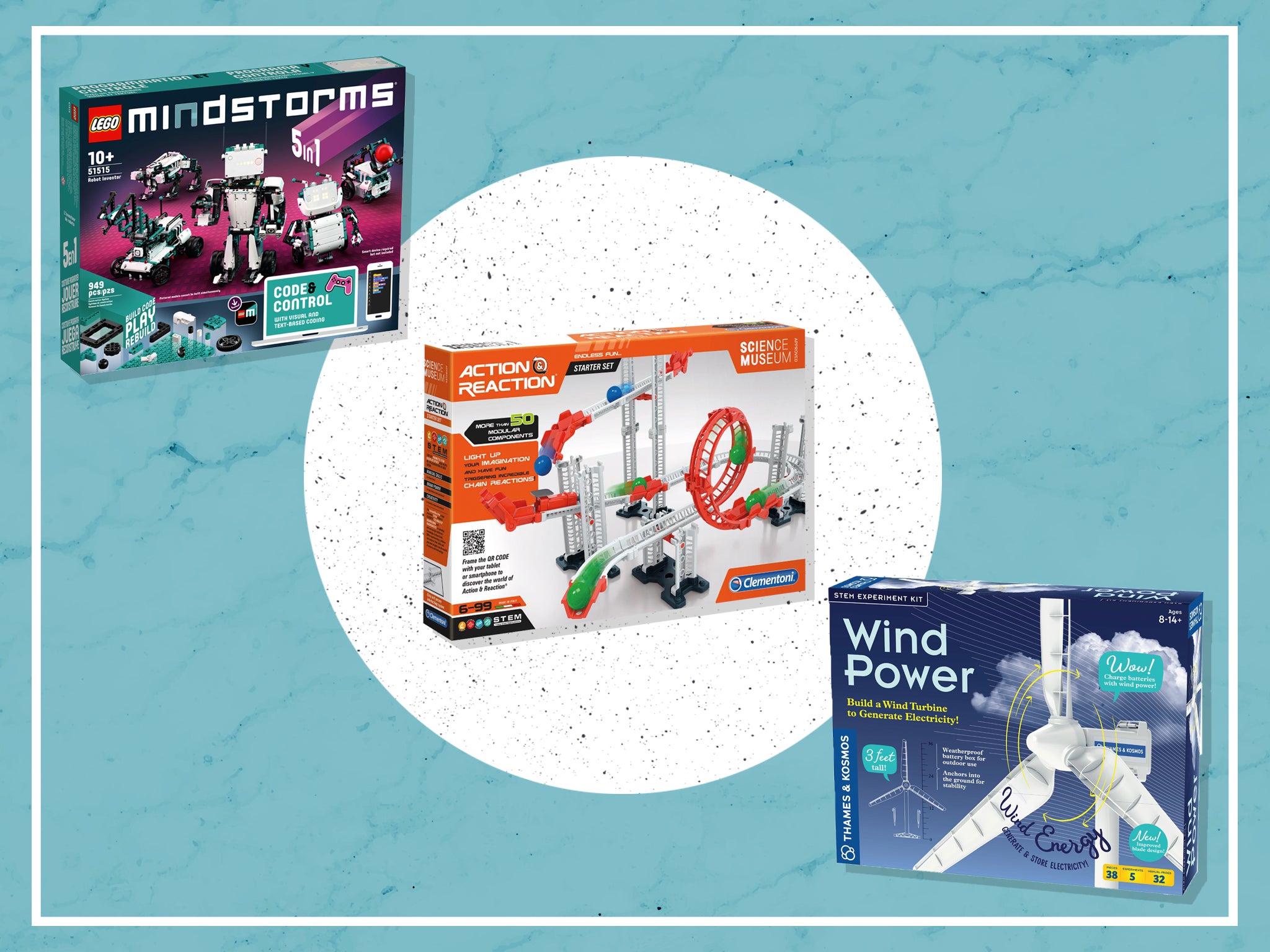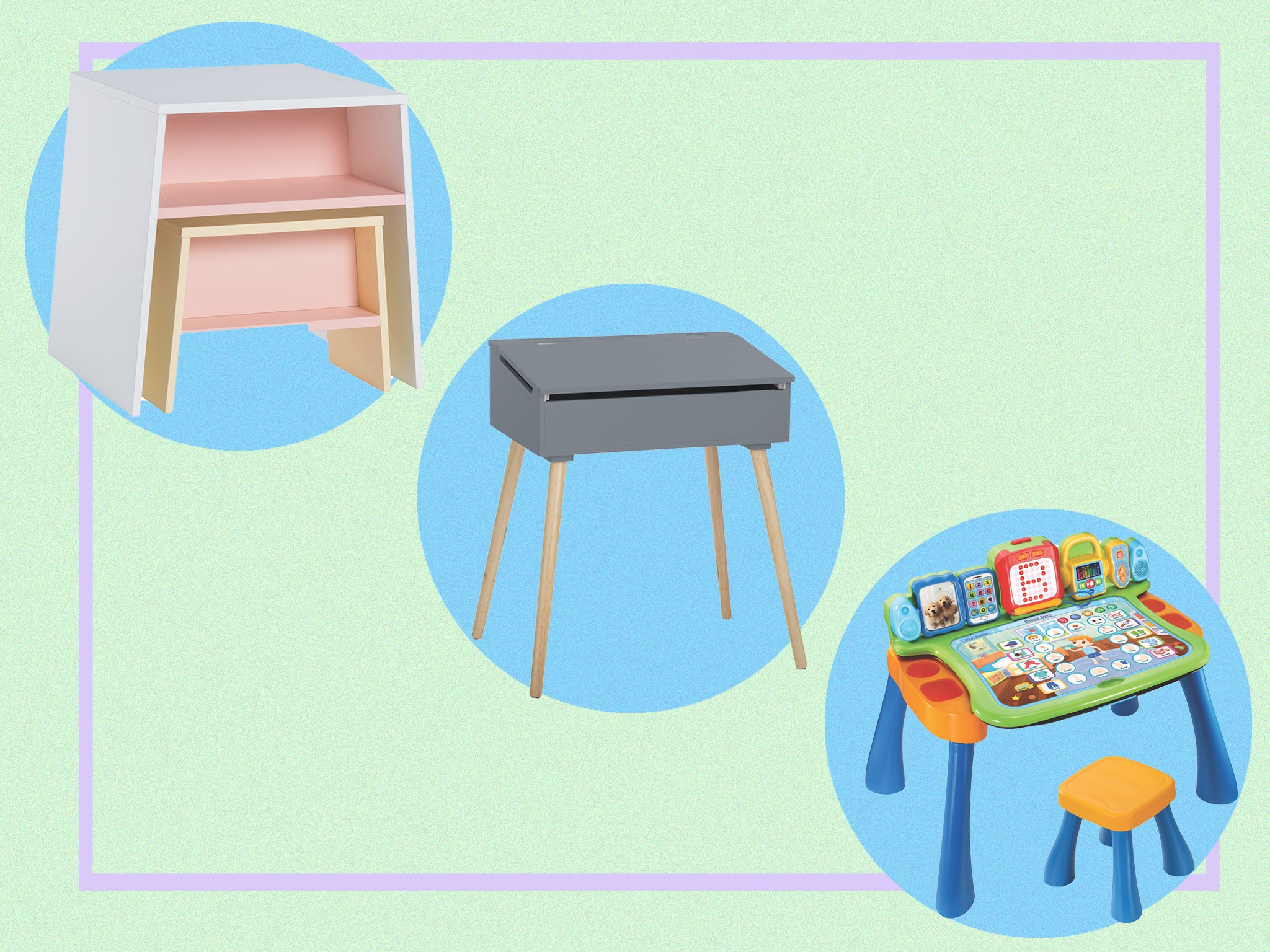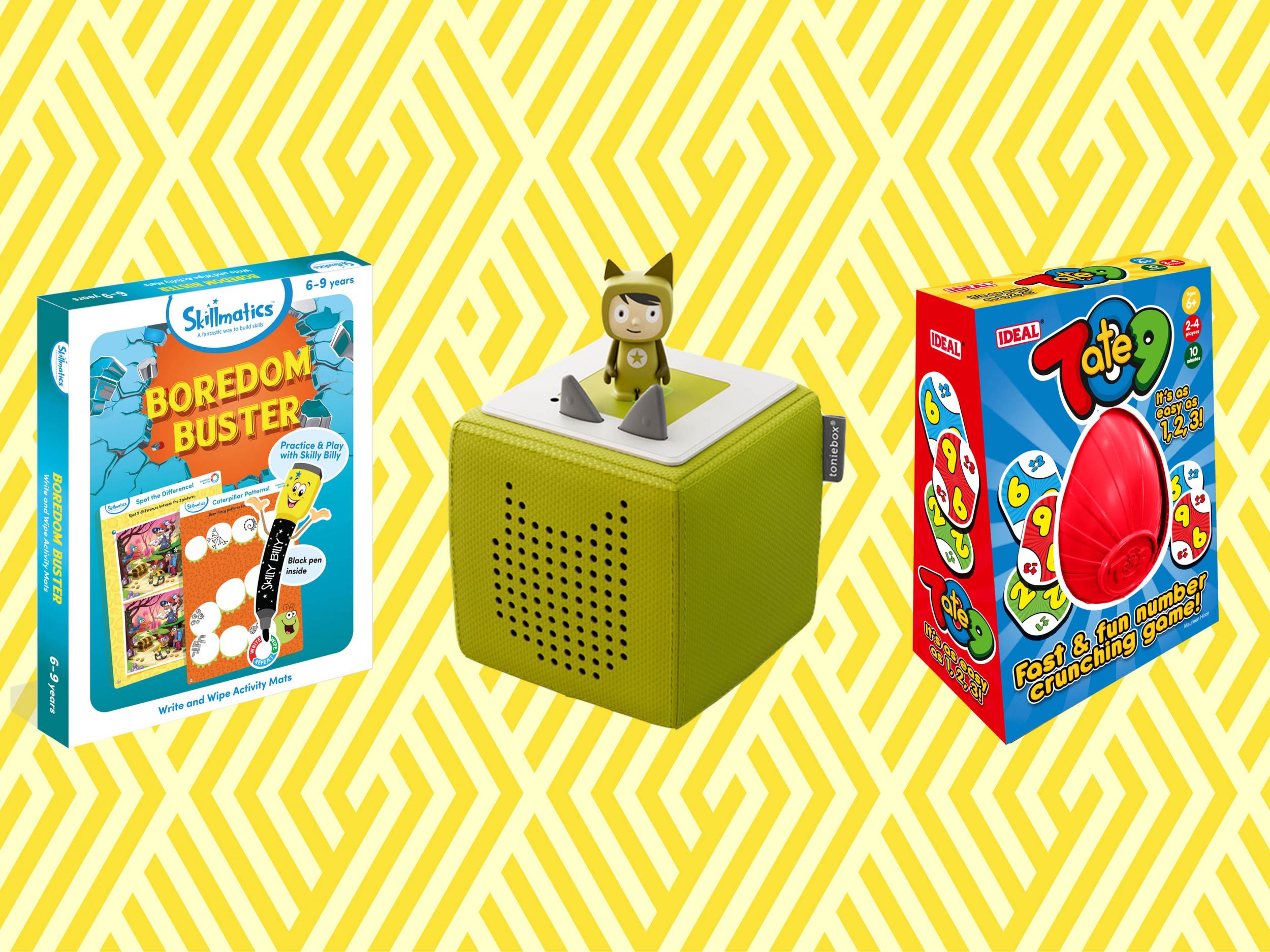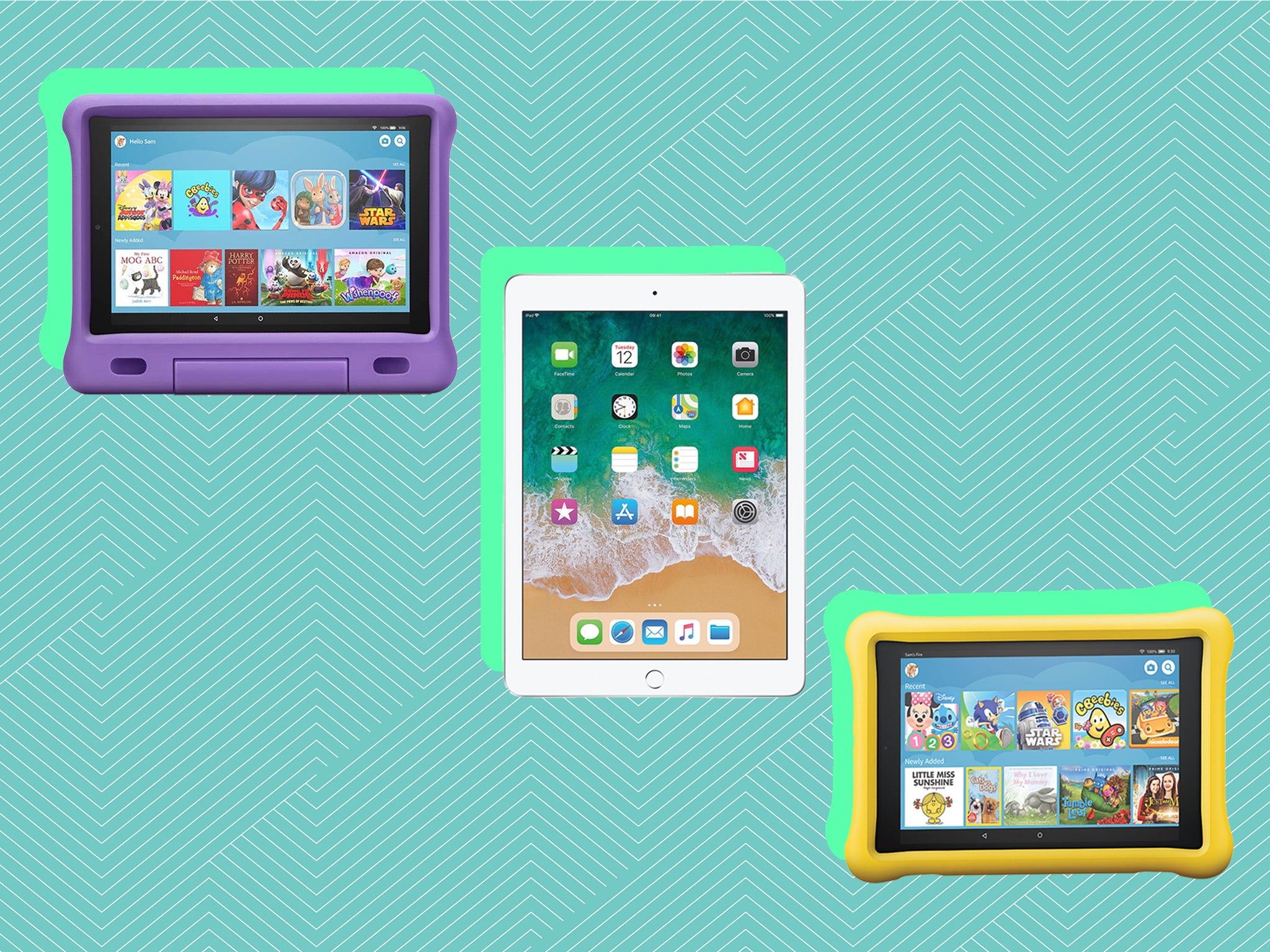The Independent's journalism is supported by our readers. When you purchase through links on our site, we may earn commission. Why trust us?
10 best Stem toys: Help kids to learn while they play
Toys and games with a grounding in science or maths can make new subjects fun

Today’s children are tomorrow’s inventors. Some parents could be raising the next James Dyson or Ada Lovelace, they just might not know it yet.
Nurturing inquisitive minds through Stem – science, technology, engineering and mathematics – learning will support the growth of the next generation of innovators.
Read more: 9 best popular science books
And learning through play at home, especially amid so much time away from schools during the pandemic, is an excellent way to do this.
But Stem knowledge is not just important for helping children achieve academically, it can also help them develop essential transferable life skills, says Georgina Durrant, a former science teacher and author of100 Ways Your Child Can Learn Through Play. Among those skills are critical thinking, creativity and scientific literacy, and Stem learning can even help children to become more resilient.
“Children get to play at trying things out and realising it’s not the end of the world if it doesn’t work; it just means they need to try again,” Durrant says.
“For example, a child could be playing with a coding robot toy with their friend, trying to instruct it to move around objects. An onlooker might just think they are pressing buttons and accidentally knocking over obstacles while squabbling with their friend over which button to press next – but, in reality, they are learning so much more.
“They are learning it’s OK to make mistakes, to keep trying new ways of coding the robot to avoid the obstacles, to think critically about why it’s not working, to be creative about their ideas and to experiment.
“And that squabbling with a friend is helping them to develop social skills, to listen to others’ ideas, to get their own ideas heard and to learn how to work as a team. All really useful skills for their future learning and for the modern world.”
Stem learning is all around us: it is in baking a cake, counting how many cars there are and planting sunflower seeds in the garden. There are also a vast number of toys available to support development in these areas.
When choosing Stem toys, Durrant says the most important question to ask is, “Will my child enjoy it?” Often, it is easy to become so focused on education that we can forget toys are, fundamentally, meant to be fun. “You can have the most amazing Stem resource in the world at home, but if your child doesn’t enjoy it, it’s not going to benefit them because it will inevitably get left in a box or shelf,” adds Durrant.
Read more: Best educational sites to help with home schooling
And Durrant points out that Stem toys do not always have to be super-advanced challenging games that will push your child’s abilities to the limit. Many of the simplest toys, such as construction kits and marble runs, are hugely beneficial to kids, she says.
With Durrant’s advice fresh in our minds, we enlisted a group of eager young testers to help put together this roundup. We tried a variety of Stem toys, from the simplest concepts to some that even challenged the adults. We have included options on opposing ends of the price scale, and some for young children and others for those who are older. All include a practical element, and promote the development of problem-solving and creativity – but, above all, they are lots of fun.
You can trust our independent reviews. We may earn commission from some of the retailers, but we never allow this to influence selections, which are formed from real-world testing and expert advice. This revenue helps to fund journalism across The Independent.
1Pepper Mint great treehouse engineering adventure

With problem-solving, electronics and engineering, this toy covers all the bases of STEM learning in a fun and creative way. And it is story-based, which adds a brilliant literary element. Most children we know love a treehouse, and this set allows them to build their very own toy version using the durable plywood parts that slot together easily. Once the basic structure was complete, our testers enjoyed adding different elements to help Pepper Mint and her aunt with a rain shield, gorgeous little LED lanterns and, most fun of all, a zipline.
The instructions are easy to follow and this is a toy that is enjoyed by children of different ages, allowing younger ones to imaginatively play together with older siblings once the treehouse itself has been built.
2That’s Gross science lab

If your little darlings are anything like ours, they will go through a stage of finding even the most revolting things irresistible. Those who cannot help themselves but pull worms from the mud or make poo jokes will be in their element with this intriguing kit – like our nine-year-old tester was. Children eight and over can play scientist and perform 26 unique experiments to make disgusting creations, such as snot slime, edible yummy blood and stink bubbles. The kit contains the equipment needed for the experiments, including a motorised toilet mixing bowl, worm spoon and maggot mould – you just need to add the household ingredients listed for each.
Our testers found the messy play and science lab enormously amusing, but this toy also takes children on a learning journey, exploring science principles such as chemical reactions, static electricity, osmosis and non-Newtonian fluids.
3Science Museum action and reaction starter set

It is amazing how something as simple as a humble marble run can excite children’s imagination and help them learn physics basics, such as gravity and force. This Science Museum toy comes with plenty of components to build numerous tracks. The pieces slot together easily, and our young testers were excited to be making something that looked like a rollercoaster, where they could push the balls to see where they ended up. We also liked that there are plenty of YouTube video tutorials for inspiration and that everyday objects, such as cups and oranges, could be added to the mix for more unique setups.
The fun does not end with the starter set we tried either, as it can be extended and built on with the addition of other kits to build an enormous setup that will provide hours of entertainment.
4Magformers shapes and more

For younger children, there are few things as fascinating as playing with magnets. Make them colourful and part of a fantastic set with which little hands can build moving creations, and you are onto a real STEM-inspired winner. This set was a big hit, and our four-year-old tester loved simply connecting the different shapes. With help from her nine-year-old brother, she was able to build a ferris wheel, which she happily played with for ages, spinning around the little people included in the box.
This set includes 46 pieces of different shapes, including triangles and squares, and all the parts needed to build the ferris wheel. But the great thing about Magformers is that children can get creative and come up with their own builds limited only by their imagination.
55 in 1 coding robot

If your child is mechanically minded and loves a challenge, this would make an excellent toy. Beyond building the DIY robot from the dozens of parts included, children can learn to code without even using a computer. Central to the robot’s actions is a mechanical coding wheel, onto which special buttons can be attached to instruct the robot to perform a series of functions, including moving, spinning and pausing. Our 12-year-old tester liked that she could make the robot draw by adding a pen and applying coding for movements, and much fun was had when instructing the robot to play football with the included ball.
6Thames & Kosmos wind power

Educating children on the possibilities of clean, renewable energy is something we could not recommend more highly. With this toy, they not only learn about wind power but can also make their own three-foot-tall turbine and use it to power a toy car. The kit comes with all the parts needed to build the turbine, which can be used safely outside. Once the turbine was up and running, we were able to perform a series of experiments by changing the angle of the blades to boost its performance and create more energy. When the children are not too busy playing with the turbine, they can read the book that comes with it to learn more about climate change.
7Archi-TECH electronic smart house

Taking inspiration from real-life examples of architecture, children can design, build and decorate a house with this kit before wiring it up to bring it to life. Inside the box are dozens of pieces of equipment to give children the freedom to let their imagination run wild, while the enclosed book offers step-by-step instructions for certain makes.
We built several structures, including a castle and neighbouring houses that were connected by a gondola lift. And the circuit building, which saw us creating a doorbell, a drawbridge and the electric gondola lift, was brilliant fun. Our year 5 tester had already made circuits at school in DT lessons, so was able to reinforce his knowledge through playing with this smart house.
8Horrible Science frightful first experiments kit

Most children are familiar with the Horrible Science books, making this kit ideal for those who are six years old and above. It includes many of the tools you would expect to find in a real science lab, including child-friendly plastic test tubes, a petri dish, universal indicator paper and goggles. A lab notebook features characters who take youngsters through a series of experiments, and there are quizzes and interesting science facts to read about too.
The most fun was had when making a bouncy ball and, of course, throwing it about the house afterwards, and the PH testing was a hit as our testers watched different household liquids magically change the colour of the indicator paper. This lab kit was not quite as messy as the other we tried, but the experiments were just as fascinating.
9Lego Mindstorms robot inventor

This is a showstopping STEM toy that comes with a heart-stopping price tag, but our young testers thought it was terrific. It is an activity they will come back to time and again, not least because they will want to try out the more than 50 different activities, like our children continue to do. Adults, who have not played with Lego since their childhood, may feel overwhelmed by the sheer number of pieces in the box, but our testers – big fans of Lego – knew how to set about putting the components together to make the different robots. Blast was the children’s favourite because they loved triggering the sensor to make him fire his shooter, and they also found Tricky’s amazing basketball skills seriously cool.
This set is one for older children – it is designed for those aged 10 and above – who can follow instructions and have access to a smartphone, as they will need to download the Robot Inventor app to use the drag-and-drop-based coding programme to control the robots.
10GeoSafari Jr my first microscope

There was nothing our three-year-old tester did not want to look at through the microscope once we gave him this toy to try out. Leaves, toy cars and even mum’s car keys can be seen in a whole new light with this pre-schooler STEM toy. It is durable and chunky, making it perfect for small hands, and two perfectly positioned eyepieces are ideal for examining objects without having to tell your little one to close one eye.
Twisting a knob with some adult guidance puts things in focus, while a light switches on with the push of a button for better visibility. This is a great toy to introduce young children to the world of STEM learning that encourages them to explore the objects around them.
The verdict: Stem toys
The Pepper Mint great treehouse engineering adventure appeals to children of different ages and abilities in several ways, so it had to be our IndyBest. Some little ones will love building the structure and adding awesome features, while others will want to play make-believe with the finished masterpiece. For older children, the Lego Mindstorms robot inventor is incredible with so many possibilities, and, for those a little younger, the GeoSafari Jr my first microscope gets our vote for igniting a passion for discovery from an early age.













